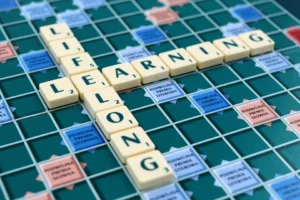From Awareness to Action
The Continuing Call for HIV/AIDS Education
By Lisa Barr, Executive Director — Hope and Help Center of Central Florida, Inc.
We are living in an era marked by incredible medical advancements surrounding HIV/AIDS. While there remains no cure, many people who have contracted HIV are living longer, fuller lives due to significant strides made in the medications and therapies that are now available.
Through ever-improving combination antiretroviral therapies (cART), mortality rates for HIV/AIDS have been reduced exponentially. However, while these advancements have helped spur greater advocacy in younger generations, HIV/AIDS diagnoses remain prevalent due to a widespread lack of access to healthcare and sexual health education.
By the end of 2021, an estimated 1.2 million people over the age of 13 had contracted HIV in the United States. The need for ongoing health education still exists, including dispelling prevailing myths and education on STI prevention.
The value of continuing education
 Education plays one of the most significant roles in HIV/AIDS prevention. By empowering individuals — especially younger people — with accurate and age-appropriate prevention information, they can make more informed decisions about their health.
Education plays one of the most significant roles in HIV/AIDS prevention. By empowering individuals — especially younger people — with accurate and age-appropriate prevention information, they can make more informed decisions about their health.
Improved education also helps not only to reduce the stigma that still surrounds HIV/AIDS — misconceptions about the condition persist despite decades of awareness efforts — but also to help promote increased STI screenings and testing that can lead to earlier diagnoses. The earlier a diagnosis is determined, the earlier the condition can be treated, which experts agree leads to better outcomes and access to specialized care.
Indeed, as we continue the fight against HIV/AIDS, education will serve as our greatest weapon.
Education and engagement
Today’s younger generations are those that require the greatest access to updated education. Because these generations were unable to experience the onset of the AIDS crisis in the 1980s and early 1990s, many of them may still be unaware of related health effects the disease can cause that older generations grew up learning.
Engaging with these younger generations requires a multifaceted approach. Firstly, educators can organize classes and workshops that interactively engage young people about how to best protect themselves against STIs or how to get involved in activism and increased awareness efforts. Similarly, peer education programs can help connect younger people with others their age who are currently living with an HIV or AIDS diagnosis, allowing them to learn more deeply about these conditions through the experiences of their peers.
Activists and educators in the fight against HIV/AIDS are also exploring the use of social media to reach the next generation. Through influencer-driven programs and education-focused social media accounts, information can be shared and engagement can grow.
Education on HIV/AIDS remains crucial, even if a diagnosis of HIV is no longer the immediate death sentence today that it once was. As the world continues to navigate the complex nature of HIV/AIDS, education efforts will remain foundational in our fight to create a future free from these chronic, life-altering conditions.
About the Author
 Lisa Barr is the Executive Director at Hope and Help Center of Central Florida, Inc. d/b/a Hope & Help. She has the privilege of leading an incredible team of talented, compassionate, and dedicated nonprofit healthcare professionals who make a difference every day. For over nine years, she has been overseeing the strategic planning, implementation, risk management, and organizational development of this vital community resource that provides HIV/STD prevention, education, testing, and treatment services. With an MBA from The Johns Hopkins University and a background in business development, marketing, and grant writing, Barr brings a combination of analytical skills, strategic thinking, and creative problem-solving to her role. She is passionate about enhancing the quality of life and health outcomes of Hope & Help’s clients, partners, and staff, as well as expanding the organization’s reach and impact in the region. Her mission is to foster a culture of excellence, innovation, and collaboration that enables Hope & Help to fulfill its vision of a world without HIV/AIDS.
Lisa Barr is the Executive Director at Hope and Help Center of Central Florida, Inc. d/b/a Hope & Help. She has the privilege of leading an incredible team of talented, compassionate, and dedicated nonprofit healthcare professionals who make a difference every day. For over nine years, she has been overseeing the strategic planning, implementation, risk management, and organizational development of this vital community resource that provides HIV/STD prevention, education, testing, and treatment services. With an MBA from The Johns Hopkins University and a background in business development, marketing, and grant writing, Barr brings a combination of analytical skills, strategic thinking, and creative problem-solving to her role. She is passionate about enhancing the quality of life and health outcomes of Hope & Help’s clients, partners, and staff, as well as expanding the organization’s reach and impact in the region. Her mission is to foster a culture of excellence, innovation, and collaboration that enables Hope & Help to fulfill its vision of a world without HIV/AIDS.



